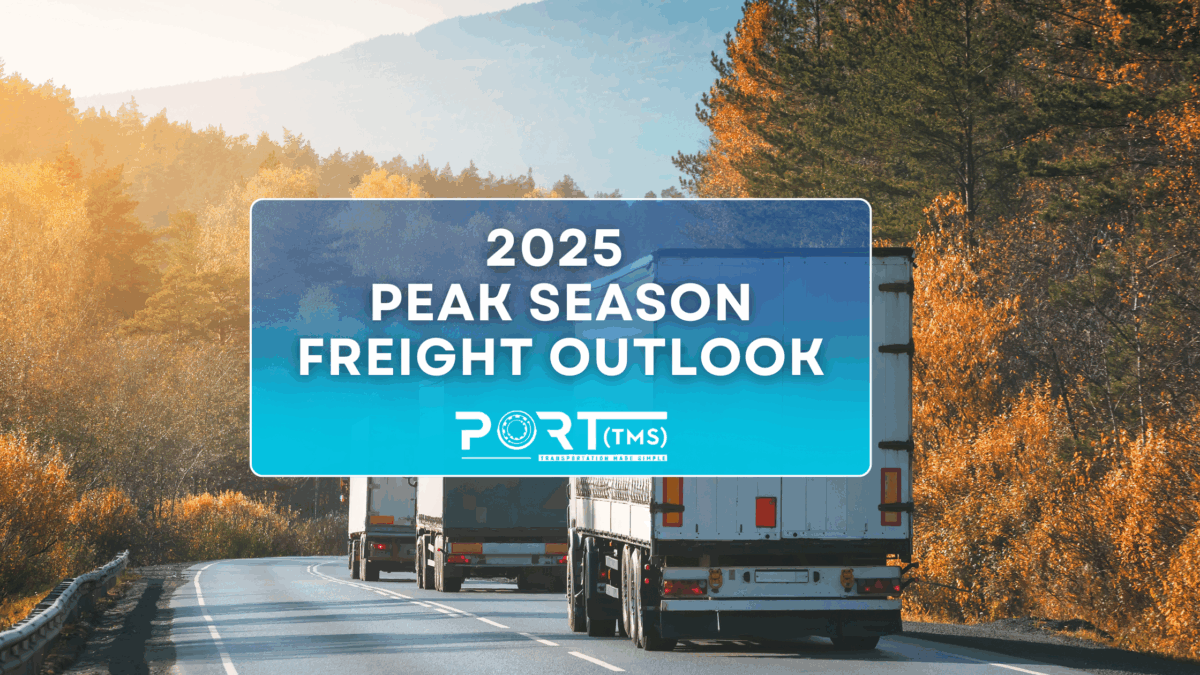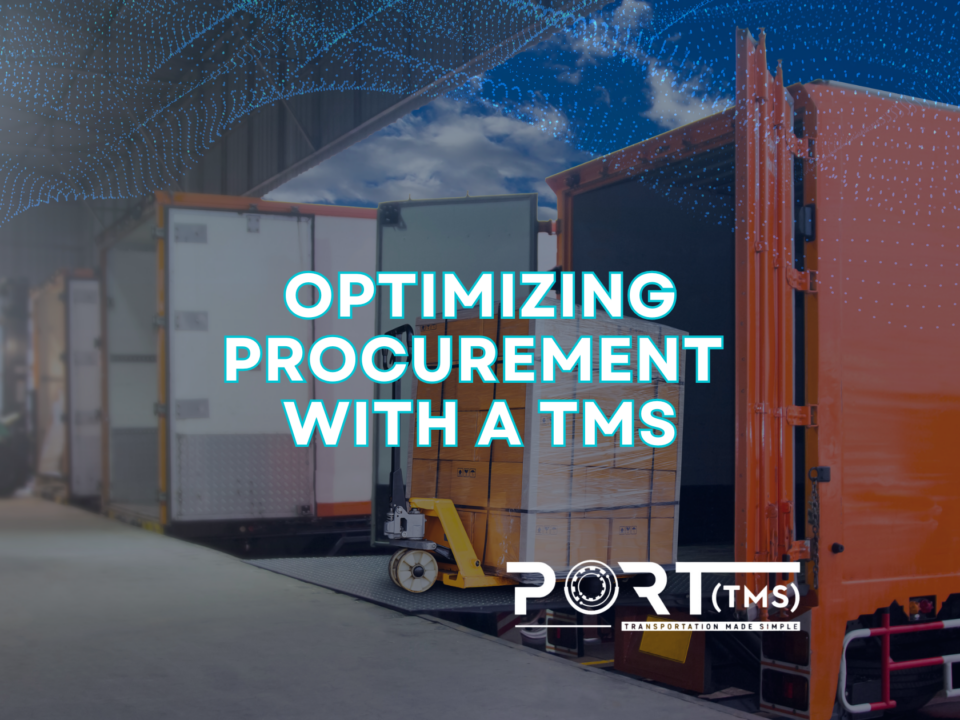
Port TMS and Convoy Platform Integration Brings Automated Booking and Vetted Carrier Network to TMS Users
August 22, 2025
Port TMS Announces Strategic Partnership with Highway to Enhance Customer Security and Value
September 30, 2025Introduction: A New Kind of Peak Season
Peak season has always tested freight networks. From back-to-school imports to the holiday surge, demand spikes put pressure on carriers and brokers alike. In 2024, that pressure never materialized—overcapacity kept rates low and tender rejections near record lows.
But 2025 is different. With capacity exiting the market, the freight landscape is normalizing. For brokers, success this year hinges less on bargain hunting and more on building predictable, efficient operations.
Truckload: Crawling Out of the Freight Recession
In 2024, truckload markets were soft. Tender rejections stayed under 5%, and linehaul rates ran about 5% below the prior year. Shippers held the upper hand.
Now, with smaller carriers leaving the market and supply tightening, modest upward pressure on rates is expected in 2025. Bargain-basement spot rates are fading, and shippers are demanding pricing stability during seasonal swings.
Brokers who can provide predictability, backed by smart coverage strategies, will hold an edge.
LTL: Stabilizing After Yellow’s Collapse
Yellow’s 2023 bankruptcy removed roughly 8% of LTL capacity overnight. By 2024, competitors had absorbed most of the freight and acquired more than 160 terminals. Carriers stabilized the market while holding firm on mid-single-digit rate increases.
In 2025, the theme is selectivity. Carriers are prioritizing partnerships that bring efficiency, reliable freight, and strong communication. To win with LTL in peak season, brokers need to strengthen carrier relationships and use technology to streamline quoting and tracking.
Intermodal: Capacity and Cost Balance
Intermodal remains a smart hedge against truckload volatility. With rail networks absorbing more freight in 2024, shippers leaned on intermodal for cost savings. In 2025, rail carriers continue to invest in network reliability and equipment repositioning, creating more balanced service levels.
Brokers who bring intermodal into the conversation can offer shippers a more predictable, cost-efficient option when truckload rates climb. Visibility and automated quoting inside Port TMS makes intermodal easier to integrate into coverage strategies.
Drayage: The First and Last Mile Challenge
Drayage remains one of the most unpredictable pain points in freight. Port congestion, chassis shortages, and driver availability can ripple through the entire supply chain during peak season.
By using Port TMS’s integrations and visibility tools, brokers can secure drayage capacity faster and keep shippers updated in real-time. Streamlined communication reduces delays at the ports and prevents missed handoffs in multimodal shipments.
Macro Themes for 2025 Peak Season
- Freight demand is ticking up, but growth is modest.
- Retail and consumer inventories remain a wildcard.
- Tariffs, labor contracts, and weather could create volatility.
- Outlook: A moderate uptick from 2024, but not the pandemic-era surge.
How a TMS Streamlines Peak Season
Scalability and Resilience: A cloud-based TMS handles seasonal shipment surges without errors or downtime, allowing brokers to process 20–40% more loads with the same headcount.
Faster Capacity Sourcing: A TMS integrated with load boards and carrier networks lets brokers cover loads with speed. Instead of dozens of phone calls, brokers can electronically broadcast shipments to a vast pool of carriers and get immediate responses.
Example: Port TMS recently announced its integration with the Convoy Platform, giving brokers direct access to vetted carriers, automated workflows, and faster coverage inside the TMS. This type of integration turns what used to take hours into minutes—critical during peak season.
Automation of Repetitive Tasks: High shipping volumes mean more tenders, rate quotes, track-and-trace updates, and invoices. TMS software automates many of these workflows – from auto-dispatching loads to generating paperwork – reducing the manual workload on your team.
Real-Time Visibility & Communication: Delays are inevitable during peak season (port backlogs, storms, holiday traffic jams). A good TMS provides end-to-end visibility of shipments in transit and can send automatic status updates.
Data-Driven Decision Making: A TMS can analyze current spot rates, lane histories, and carrier performance to suggest the best carrier or mode for a given load.
Why Port TMS is the Peak Season Edge
Port TMS is built for brokers who want to turn peak season from chaos into opportunity. By combining automation, visibility, and integrations, Port TMS ensures you can:
- Secure reliable coverage faster.
- Keep customers informed and loyal.
- Protect margins with smarter decision-making.
Conclusion
2025’s peak season won’t mirror the extremes of 2021, but it will test which brokers are prepared to work smarter. With Port TMS, you can streamline your operations, absorb seasonal surges, and deliver for shippers when it matters most.
See how Port TMS keeps brokers ahead this peak season.




